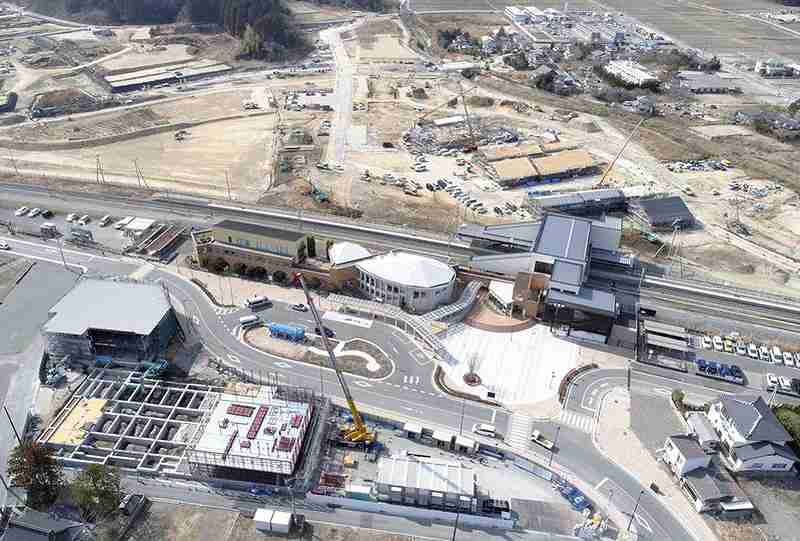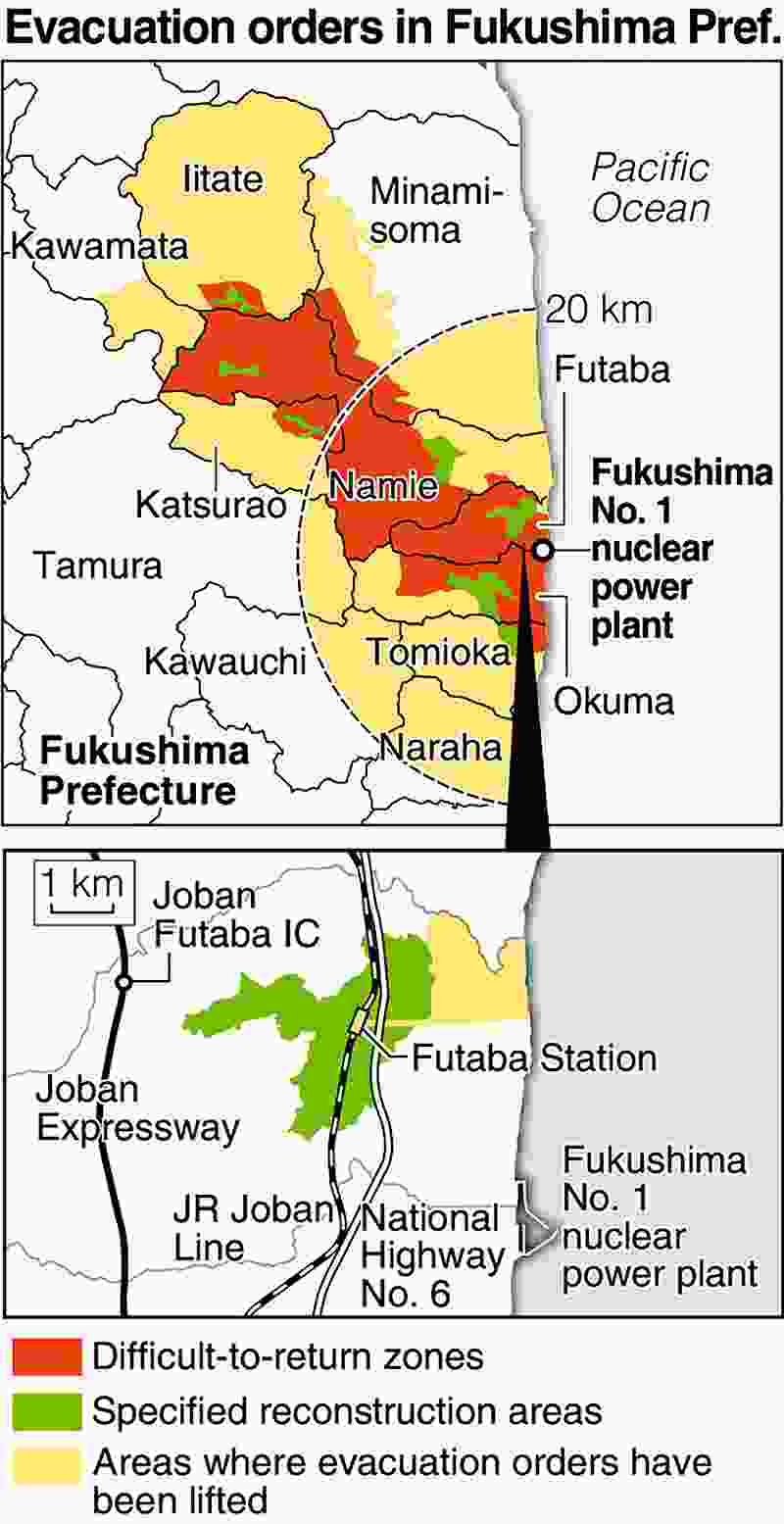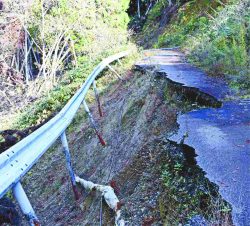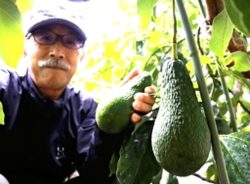
Construction work is underway in central Futaba in Fukushima Prefecture on Thursday.
18:52 JST, March 11, 2022
FUKUSHIMA— Former residents of Futaba, Fukushima Prefecture, will soon be allowed to return to the only municipality in which people have not been allowed to resettle since the March 2011 nuclear disaster.
The lifting of evacuation orders is expected to start progressively from spring in so-called specified reconstruction areas in Fukushima Prefecture, where Tokyo Electric Power Holdings Inc.’s disaster-stricken nuclear power plant is located.
Decontamination efforts and other measures have been prioritized in specified reconstruction areas so that evacuation orders can be lifted.
The central government launched a policy to work toward the reconstruction of areas in six towns and villages that had been identified as difficult to return to without such efforts. Evacuation orders are scheduled to be lifted in Katsurao and Okuma before summer, and Futaba in June or later, while in Namie, Tomioka and Iidate they are not expected to be lifted until next year.

The Fukushima No. 1 nuclear power plant is located in Futaba, which had 7,140 residents at the time of the accident, all of whom were evacuated from the town.
Although an evacuation order was lifted in an area comprising 5% of the town in March 2020, former residents were not allowed to return permanently.
The area where an evacuation order is scheduled to be lifted as early as June comprises 10% of the municipality and is located in the central part of the town around JR Futaba Station.
About 60% of the population used to live in the area before the accident.
The functions of the municipal office will return to the town from Iwaki, where they have been based since the evacuation, and commercial facilities, medical clinics and public housing units for disaster victims will be built.
Futaba officials have set a target of having a resident population of approximately 2,000 five years after the lifting of the evacuation order, aiming to attract companies and immigrants to the area.
An industrial park will be established in the area where the evacuation order has already been lifted, and the town will provide subsidies to attract companies using funds from the government among other sources.
Incentives will include rent-free land for up to three years. The subsidy amount, including the part paid by the central government, will be up to about ¥3 billion for each company. Twenty-four companies, including construction and electronic component manufacturers, are planning to launch operations in the area.
The municipality will also encourage former residents to consider maintaining residences in two towns, Futaba and the town they settled in after the disaster.
The town plans to build 30 public housing units for returnees and 56 units for people who choose to split their time between two municipalities.
“We are in a critical situation. The town’s survival is at stake,” Mayor Shiro Izawa said.
Evacuation orders have been lifted in 70% of the 11 municipalities in the prefecture. However, the longer it takes to lift the orders, the lower the percentage of returnees.
The first evacuation order to be lifted was in 2014 in the eastern part of the Miyakojimachi district of Tamura and 54.4% of residents returned.
In Okuma, where the evacuation order was partially lifted in 2019, the percentage stood at 1.3%.
Futaba started allowing former residents to stay overnight in January as part of preparations for their permanent return to the area, but only 19 people from 12 households had registered to do so as of Thursday.
In autumn, briefing sessions were held about the preparatory lodging program at 11 venues nationwide, and a number of questions arose concerning the demolition of houses and clearing of land in the town.
However, queries at the briefing were far from positive, with one participant asking, “Are you going to use taxpayers’ money to build facilities in a town where only a small number of people are planning to return?”
“The town should face the reality that the number of people who want to return is small,” said Akira Imai, senior researcher at the Japan Research Institute for Local Government. “It should focus on supporting displaced elderly residents and people in need, while maintaining the minimum number of functions necessary to support returnees.”
"Society" POPULAR ARTICLE
-

M4.9 Earthquake Hits Tokyo, Neighboring Prefectures
-

Israeli Tourists Refused Accommodation at Hotel in Japan’s Nagano Pref., Prompting Protest by Israeli Embassy and Probe by Prefecture
-

M7.5 Earthquake Hits Northern Japan; Tsunami Waves Observed in Hokkaido, Aomori and Iwate Prefectures
-

Tsukiji Market Urges Tourists to Avoid Visiting in Year-End
-

M5.7 Earthquake Hits Japan’s Kumamoto Pref., Measuring Upper 5 Intensity, No Tsunami Expected
JN ACCESS RANKING
-

Keidanren Chairman Yoshinobu Tsutsui Visits Kashiwazaki-Kariwa Nuclear Power Plant; Inspects New Emergency Safety System
-

Tokyo Economic Security Forum to Hold Inaugural Meeting Amid Tense Global Environment
-

Imports of Rare Earths from China Facing Delays, May Be Caused by Deterioration of Japan-China Relations
-

University of Tokyo Professor Discusses Japanese Economic Security in Interview Ahead of Forum
-

Japan Pulls out of Vietnam Nuclear Project, Complicating Hanoi’s Power Plans
























